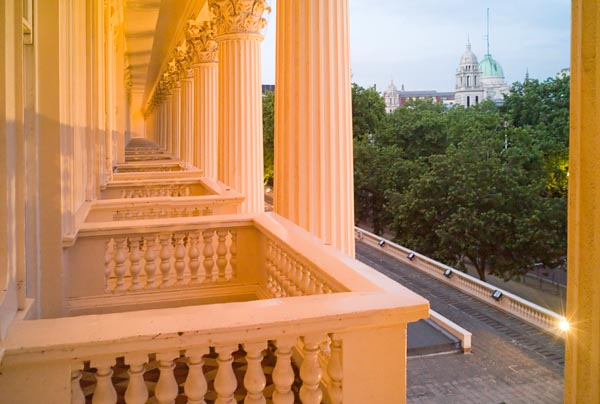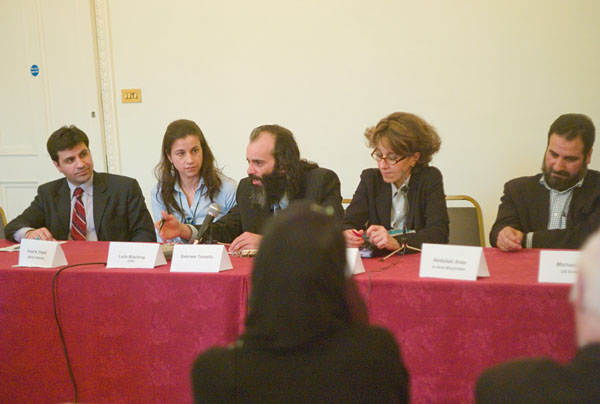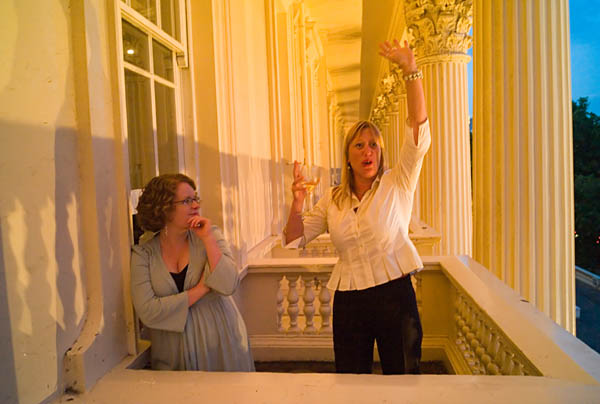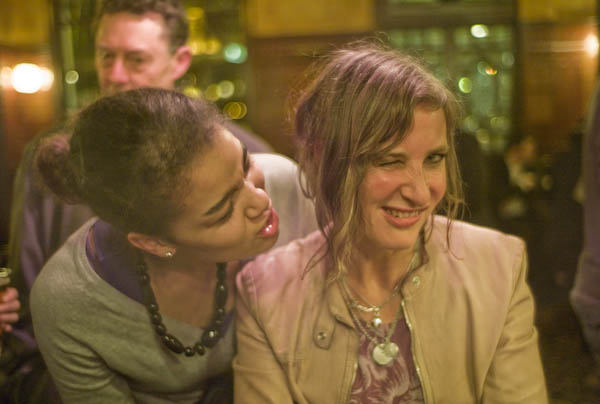I’m sure beer has always played an important role in photography, and it is certainly good to see the London Photographers’ Gallery getting sponsorship, just a pity that it some comes from a Japanese beer company. The bottled evidence (and I tried another last night to confirm my convictions) is that they just don’t understand beer as we know it, and it’s a feeling that I sometimes have about the gallery and photography.
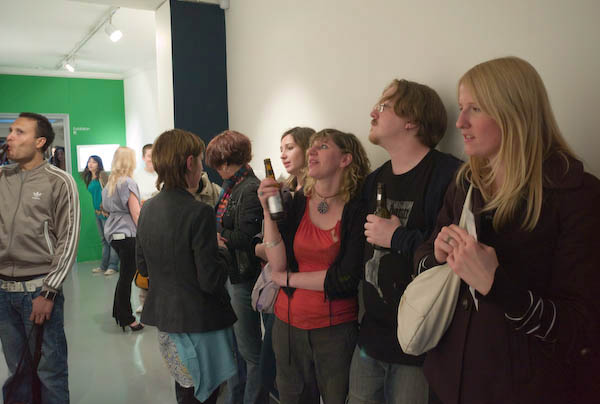
Some people at the gallery were drinking the beer
Should you go to an openings there, the best policy is to stick to the wine, which is at least cheap but not nasty, and at the “suggested donation” of a quid a glass is considerably better value than the free beer. In a not dissimilar vein, if the work showing in the ground floor gallery doesn’t stimulate, there is often something in the upstairs print room to soothe the nerves.
I decided I didn’t have time for reaching and writing a few years back, but went to the opening with a fellow photographer who still teaches in further education, and we spent some time talking about the work on the wall and also about this year’s degree shows, so much of which seemed to lack the kind of direction and creative input that our students – at a lower level – had been required to show. We do seem to be putting more and more students through photography courses but in many ways expecting and getting less and less from them. Sometimes it even seems that the higher up the educational ladder the less we expect from them – and at at least on some courses, the less we are giving to them. Many of my former students would come back to college while studying in higher education and say thank god you taught us photography, because nobody here does.
At least there was good photography on the walls for a retrospective by Keith Arnatt, still most famous for his Trouser-Word Piece (1972), a self-portrait wearing a placard with the statement ‘Im a Real Artist‘, made when he was part of a British conceptual art movement of sometimes immense vacuity, peppered with fleeting moments of insight. It was a statement that raised many questions at the time, and was perhaps behind his move to become a ‘real photographer’ afterwards, although what truly inspired him was being introduced, in 1973, to the work of Walker Evans, August Sander and Diane Arbus.
That Arnatt was born in 1930 and had undergone an art education which had taken him to teaching sculpture at Newport College of Art and lived to the age of 43 without apparently having been exposed to some of the major artistic acheivements of the 20th century says volumes about the attitudes of the art establishment to photography. Even had he studied photography at most art colleges, he would probably not have been introduced to their work.
One of the figures in British education who did much to change this, at least on the documentary photography course he inaugrated at Newport, was Arnatt’s colleage and close friend, David Hurn, one of the best British photographers of the era, and a Magnum member since the 1960s. Hurn has both curated this show and written the accompanying book of Arnatt’s work, ‘Im a Real Photographer, Keith Arnatt: Photographs 1974 2002.’
Although his earlier black and white works are interesting, it was really with colour that Arnatt began to produce works that I find most convincing, and notable among those on the walls are his ‘Miss Graces Lane‘ (1986 87), ‘Pictures from a Rubbish Tip‘ (1988 89), ‘The Tears of Things‘ (Objects from a Rubbish Tip) (1990 1991) and the delightful ‘I Wonder if Cows Wonder‘ (2002).
Of course the idea of producing beautiful images from rubbish was in no way novel, and had perhaps been more cleanly and forcibly expressed in Irving Penn‘s great platinum prints of cigarette butts and other urban detritus made in the 1970s. Arnatt’s work has the added dimension of colour, which in some respects softens the impact, but leaves us in no doubt about his abilities as a fine colourist.
Given this, his small series of large close-up images of dog turds is surprising. These are truly images from another planet where grass has a rather different colour. Perhaps Arnatt is deliberately taking a child’s-eye view, echoing the threat to childrens’ health as they roll in the soiled grass, and perhaps these are deliberately ugly images to repel the viewer. If so, they did. It wasn’t the subject matter but the treatment that made me flinch.
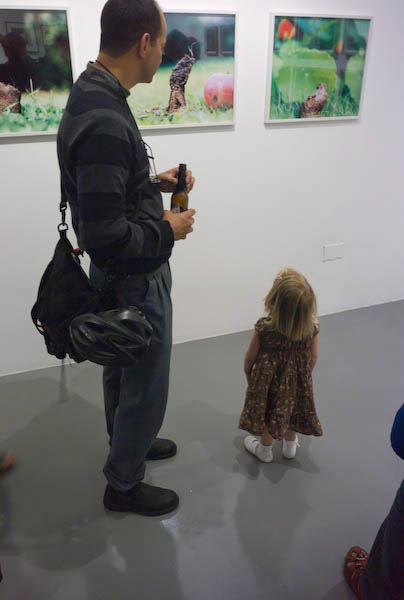
I also found no great photographic interest in a series of large blow-ups of notes from Arnatt’s late wife, Jo, written between 1990-94. Perhaps because I don’t really feel I want to know about the relationship between them and that these illuminate. Most importantly, because I don’t think that photography adds anything to them, and I think the actual post-it notes would have had at least as much appeal.
The selection of which notes to preserve and display appears to have been made on the basis of the textual content, and what matters is the text, not the image. A photocopier could have produced enlarged versions of them for display. There does seem to me to be something essentially non-photographic about this work, which some others seem to see as part of a debate about the nature of photography. To me its an irrelevance that just happened to be made using a camera.
Back to beer. With my lunch I had a bottle of Budvar Budweiser (known as Czechvar for legal reasons in the USA.) And if Americans ever want to try to understand Europe and the feelings that many Europeans have about America, they might well compare a bottle to the vastly inferior US Budweiser brew, as well as reflecting that the name is that of the largest city in South Bohemia in the Czech Republic. Budvar is a company who I wish would sponsor the Photographers’ Gallery.
